This was something I posted on another thread that the OP went ahead and deleted his OP, which killed the entire thread. Which was a shame because though there was some off topic debate, that was cleaned up and moderated and there was a lot of good information and discussion on that thread.
In the spirit of the good discussion from that thread, I wanted to use my post in there discussing FRFR not only as a viable alternative to using tube amps and pedals on stage; but also touch on some of the advantages of doing so. I've done like topics in the past, but felt compelled to compose this post and didn't want it lost to the nether world of the 'deleted posts' graveyard. I've updated it with interesting and colorful pictures for your reference too.
This is less a debate piece or argument starter and more a 'state of my gear' post for discussion. I'm not out to prove anything, convince anyone, nor claim any sort of superiority or anything of the sort. Just discussing my setup, what I am doing, how I am doing it and the results. There's nothing to debate here with me about what's better or worse; I'm just talking for folks that are interested in how this sort of rig works by discussing my opinions and experience with it. Nothing more, nothing less.
Addressing the topic here directly, I'm one of the weirdos that have been running FRFR for a long time, far before it was fashionable... or even in a lot of cases even acceptable practice. (*Assuming of course it even is either of those today... but I digress...)
There are very real reasons that many folks cannot get comfortable using FRFR; it's a total paradigm shift for any guitarist that have not run direct to FOH 'coming up' and paying their dues.
It's very equivalent to the guy that cannot track in a studio from the control booth, even through big studio monitors... we've all either seen it or been there.
I might have been a good candidate for FRFR since I've recorded a far bunch and have also mixed and mastered professionally (I owned a mastering company for 3 years). I've worked in studios and run live sound. I've also gigged and played guitar since I was a 13 year old kid and consider myself a guitarist first and engineer as a far second... but it is interesting to look at in retrospect.
I've said a lot of things about FRFR over the years, defining it, explaining it, defending it... blah blah blah.
Fact remains: guitarists come up with a guitar, pedals, maybe a processor and an amp. End of responsibility for their tone and expertise. Many won't even delve into the details of just those aspects of their rig; I know many insanely killer players that can't do a setup on their guitar or look baffled when their amp doesn't come on... because a fuse blew. (And I'm the guy those guys always come to on the gig when they need to troubleshoot or forgot something.... "Hey, do you have any extra picks man? I forgot mine...." and my favorite - "Hey... do you have an extra guitar strap?" (And yes, I carry extras...)).
When you run FRFR all the sudden you are responsible and need expertise in your signal path beyond the cab's speaker. You need expertise in choosing a mic, positioning it, gain staging/preamp and EQ beyond the speaker cab. With many modelers, you can create signal chains that are either too complicated or sometimes impossible to do with an analog rig. You have to understand, shape and do your adjustments before the gig.
The Axe-FX is great to mention because you can globally turn your reverb up or down, globally turn your effects up or down across all your presets and with the II you can adjust your overall gain into your presets globally. Both generations allow you to use 11-band Graphic EQ on either or both your Output 1 and/or output 2. It's pretty hip to quickly dial in a room or appease the sound guy.
That said, if you know what you are doing and how to balance your preset volume outputs (which I'll be doing a video about shortly that applies to all modelers running direct to FOH) and have proper foot controllers and expression pedals... I've never once tweaked on the gig by going into the unit menus. That's well over 300+ shows on stages from big national stages at outdoor festivals, small rooms playing acoustically, big rock clubs, small hole-in-the-wall rock clubs, casinos, etc.. Why? Am I 'super man' as noted above? No, I can confidently say I am anything but 'superman' at all.
I have used the global EQ to lighten or darken EQ upon request; but 99% of the time, it's level up on sound check..."Guitar.... great. Thank you..." and then go back to the board after sound check, EQ's are flat on my channel. After the gig, no change. Flat EQ. Literally hundreds of sound guys now... flat EQ.
Doesn't take a rocket scientist to figure out that it just might be working pretty damn good.
On stage, I carry a powered monitor. It's for 'more me' and I set it in front of me 9/10 times, most times right next to the stage monitor. I've also extensive experience with in-ears and zero stage monitors; workable but I hate working with in-ears; personal preference. If I need to carry the room from stage, my current powered monitor is more than up to the task - it peaks at 1400 watts and puts out 129db with *far* less beaming than any guitar speaker cab. I flip that beast up and let it rip. And, oh my, it can rip.
I have used my current speaker cab right next to a 50 watt Marshall 1/2 stack and it more than stood up; in fact I was at barely 1/2 up and it was more than matching the output from that 412. Jeff (the other guitarist) asked me if I have a 'magic' box. I just grinned. I just might have a magic box.
Now I post all this and if you don't agree or want to accept what I say as plain honest truth, you can just disagree or call it all hype. I don't care. I'm out there doing the thing for real. I keep getting hired to play. I do sessions for commercial jingles, the producers keep calling. I'm doing a WYCD Major market (#1 station in it's genre and demographic) radio webcast show this Thursday (acoustic, sans Axe-FX) but the point is I'm not trying to 'prove' anything or 'convince' any one of anything. I'm just another gigging joe like anyone else, nothing special. Another has-been, never-was, wanna-be hack. But I'm not talking out of my ass or blowing smoke either.
This is real. FRFR is real. It's convenient? Sure. It's powerful? Yea. When I show guys some of the things I can do with my rig, on the fly, without thinking... adding to the overall presentation of the music on stage... it's far beyond what you could ever do without the most complicated and intricate rig using analog rigs. You'd need massive back-line setups like the Edge, Joe Perry to even approach what I can do... from one box.
It's pretty cool. And it all fits in the trunk of my car; onto my micro-cart and one trip. I am setup and tore down 10 minutes each way; I can do quick turns on festival stages and have all my own tones 100% as I set them up with all my cool possibilities at the click of a switch or the push of an expression pedal. Every gig. Every room. Every stage. Acoustic or electric.
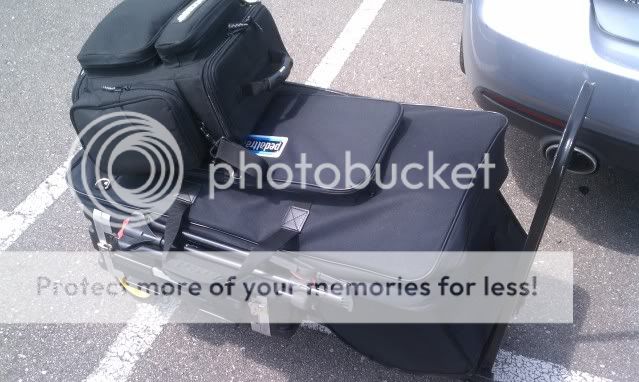
Does that mean it's for everyone? NO. It isn't. Guys happy and dependent on that amp cranked up aimed at their ass and the backs of their knees might not dig a monitor blowing in their face instead. I've been the guy with the big tube amps and no pedals cranking a 412 on stage at my ass and the backs of my knees. And I've been the guy with a magic box, a powered monitor and a pedal board controller with some expression pedals.
I could use any sort of rig and make it work - it is one of the benefits of being an insatiable gear hound pretty much my whole life. Hand me a tube screamer and a Peavey Classic 30 and I could do pretty much any gig I'd get called for. No problem. But the rig I run now? I would not trade it for the world.
I'm having more fun, sounding better than I ever have and enjoying every time I am on stage or when the red light comes on in the studio because of the rig I run. And that doesn't have to impress, convince or be debated with anyone. I don't need anyone to agree or care; doesn't matter one bit to me.
Here's my whole rig from a recent show:
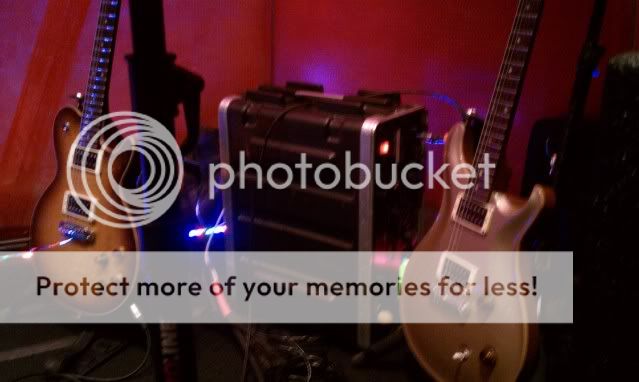
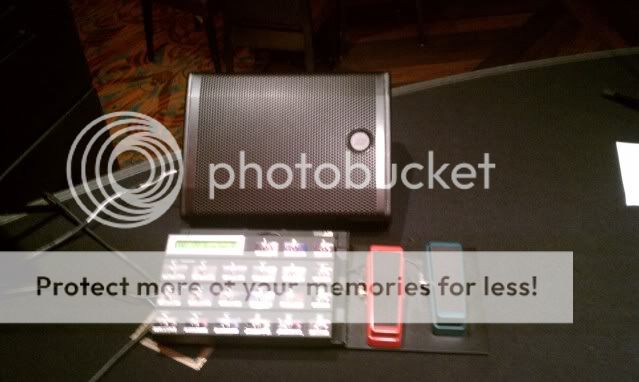
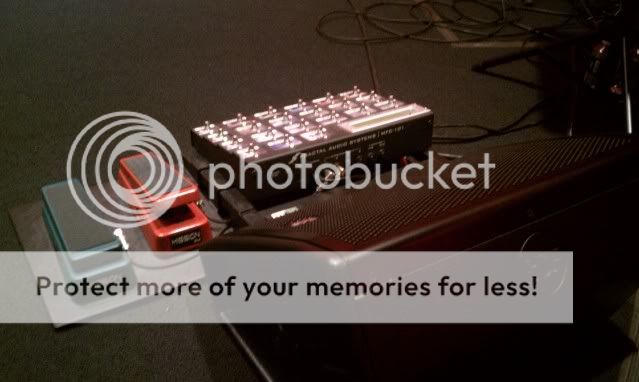
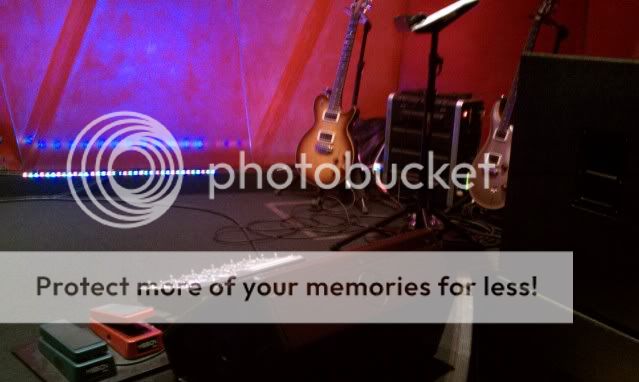
So if you have had good results running FRFR or direct to FOH, please post up your experience, your rig and discuss your setup and how you are doing it for others to learn and share.
In the spirit of the good discussion from that thread, I wanted to use my post in there discussing FRFR not only as a viable alternative to using tube amps and pedals on stage; but also touch on some of the advantages of doing so. I've done like topics in the past, but felt compelled to compose this post and didn't want it lost to the nether world of the 'deleted posts' graveyard. I've updated it with interesting and colorful pictures for your reference too.
This is less a debate piece or argument starter and more a 'state of my gear' post for discussion. I'm not out to prove anything, convince anyone, nor claim any sort of superiority or anything of the sort. Just discussing my setup, what I am doing, how I am doing it and the results. There's nothing to debate here with me about what's better or worse; I'm just talking for folks that are interested in how this sort of rig works by discussing my opinions and experience with it. Nothing more, nothing less.
Addressing the topic here directly, I'm one of the weirdos that have been running FRFR for a long time, far before it was fashionable... or even in a lot of cases even acceptable practice. (*Assuming of course it even is either of those today... but I digress...)
There are very real reasons that many folks cannot get comfortable using FRFR; it's a total paradigm shift for any guitarist that have not run direct to FOH 'coming up' and paying their dues.
It's very equivalent to the guy that cannot track in a studio from the control booth, even through big studio monitors... we've all either seen it or been there.
I might have been a good candidate for FRFR since I've recorded a far bunch and have also mixed and mastered professionally (I owned a mastering company for 3 years). I've worked in studios and run live sound. I've also gigged and played guitar since I was a 13 year old kid and consider myself a guitarist first and engineer as a far second... but it is interesting to look at in retrospect.
I've said a lot of things about FRFR over the years, defining it, explaining it, defending it... blah blah blah.
Fact remains: guitarists come up with a guitar, pedals, maybe a processor and an amp. End of responsibility for their tone and expertise. Many won't even delve into the details of just those aspects of their rig; I know many insanely killer players that can't do a setup on their guitar or look baffled when their amp doesn't come on... because a fuse blew. (And I'm the guy those guys always come to on the gig when they need to troubleshoot or forgot something.... "Hey, do you have any extra picks man? I forgot mine...." and my favorite - "Hey... do you have an extra guitar strap?" (And yes, I carry extras...)).
When you run FRFR all the sudden you are responsible and need expertise in your signal path beyond the cab's speaker. You need expertise in choosing a mic, positioning it, gain staging/preamp and EQ beyond the speaker cab. With many modelers, you can create signal chains that are either too complicated or sometimes impossible to do with an analog rig. You have to understand, shape and do your adjustments before the gig.
The Axe-FX is great to mention because you can globally turn your reverb up or down, globally turn your effects up or down across all your presets and with the II you can adjust your overall gain into your presets globally. Both generations allow you to use 11-band Graphic EQ on either or both your Output 1 and/or output 2. It's pretty hip to quickly dial in a room or appease the sound guy.
That said, if you know what you are doing and how to balance your preset volume outputs (which I'll be doing a video about shortly that applies to all modelers running direct to FOH) and have proper foot controllers and expression pedals... I've never once tweaked on the gig by going into the unit menus. That's well over 300+ shows on stages from big national stages at outdoor festivals, small rooms playing acoustically, big rock clubs, small hole-in-the-wall rock clubs, casinos, etc.. Why? Am I 'super man' as noted above? No, I can confidently say I am anything but 'superman' at all.
I have used the global EQ to lighten or darken EQ upon request; but 99% of the time, it's level up on sound check..."Guitar.... great. Thank you..." and then go back to the board after sound check, EQ's are flat on my channel. After the gig, no change. Flat EQ. Literally hundreds of sound guys now... flat EQ.
Doesn't take a rocket scientist to figure out that it just might be working pretty damn good.
On stage, I carry a powered monitor. It's for 'more me' and I set it in front of me 9/10 times, most times right next to the stage monitor. I've also extensive experience with in-ears and zero stage monitors; workable but I hate working with in-ears; personal preference. If I need to carry the room from stage, my current powered monitor is more than up to the task - it peaks at 1400 watts and puts out 129db with *far* less beaming than any guitar speaker cab. I flip that beast up and let it rip. And, oh my, it can rip.
I have used my current speaker cab right next to a 50 watt Marshall 1/2 stack and it more than stood up; in fact I was at barely 1/2 up and it was more than matching the output from that 412. Jeff (the other guitarist) asked me if I have a 'magic' box. I just grinned. I just might have a magic box.
Now I post all this and if you don't agree or want to accept what I say as plain honest truth, you can just disagree or call it all hype. I don't care. I'm out there doing the thing for real. I keep getting hired to play. I do sessions for commercial jingles, the producers keep calling. I'm doing a WYCD Major market (#1 station in it's genre and demographic) radio webcast show this Thursday (acoustic, sans Axe-FX) but the point is I'm not trying to 'prove' anything or 'convince' any one of anything. I'm just another gigging joe like anyone else, nothing special. Another has-been, never-was, wanna-be hack. But I'm not talking out of my ass or blowing smoke either.
This is real. FRFR is real. It's convenient? Sure. It's powerful? Yea. When I show guys some of the things I can do with my rig, on the fly, without thinking... adding to the overall presentation of the music on stage... it's far beyond what you could ever do without the most complicated and intricate rig using analog rigs. You'd need massive back-line setups like the Edge, Joe Perry to even approach what I can do... from one box.
It's pretty cool. And it all fits in the trunk of my car; onto my micro-cart and one trip. I am setup and tore down 10 minutes each way; I can do quick turns on festival stages and have all my own tones 100% as I set them up with all my cool possibilities at the click of a switch or the push of an expression pedal. Every gig. Every room. Every stage. Acoustic or electric.

Does that mean it's for everyone? NO. It isn't. Guys happy and dependent on that amp cranked up aimed at their ass and the backs of their knees might not dig a monitor blowing in their face instead. I've been the guy with the big tube amps and no pedals cranking a 412 on stage at my ass and the backs of my knees. And I've been the guy with a magic box, a powered monitor and a pedal board controller with some expression pedals.
I could use any sort of rig and make it work - it is one of the benefits of being an insatiable gear hound pretty much my whole life. Hand me a tube screamer and a Peavey Classic 30 and I could do pretty much any gig I'd get called for. No problem. But the rig I run now? I would not trade it for the world.
I'm having more fun, sounding better than I ever have and enjoying every time I am on stage or when the red light comes on in the studio because of the rig I run. And that doesn't have to impress, convince or be debated with anyone. I don't need anyone to agree or care; doesn't matter one bit to me.
Here's my whole rig from a recent show:




So if you have had good results running FRFR or direct to FOH, please post up your experience, your rig and discuss your setup and how you are doing it for others to learn and share.
